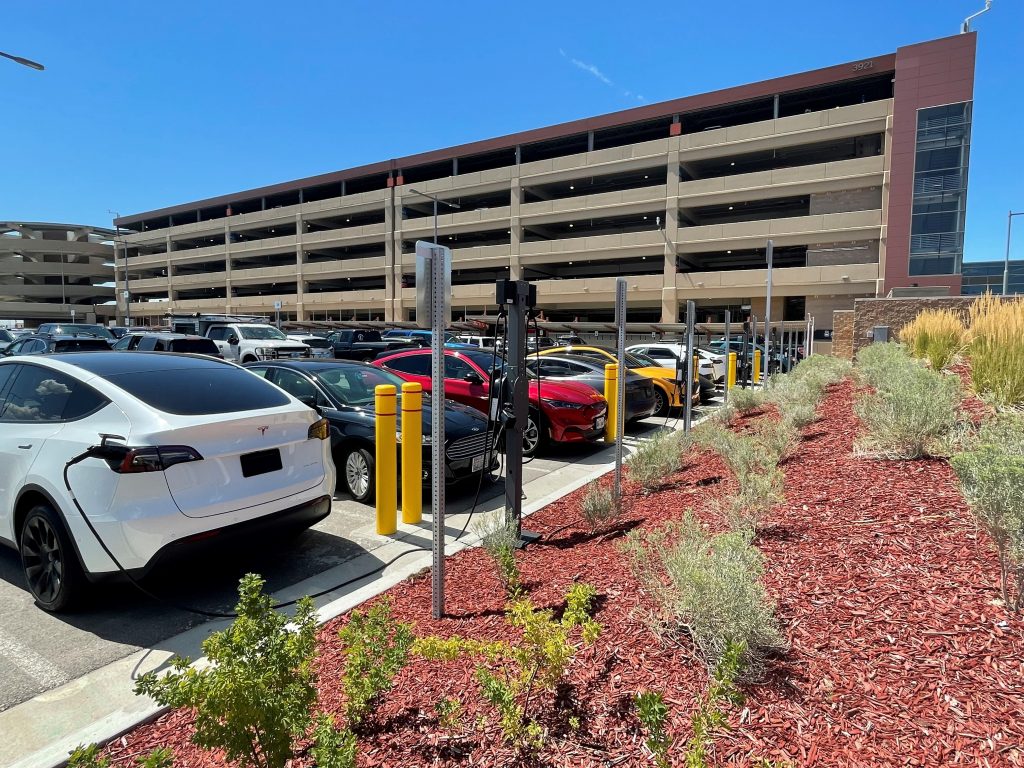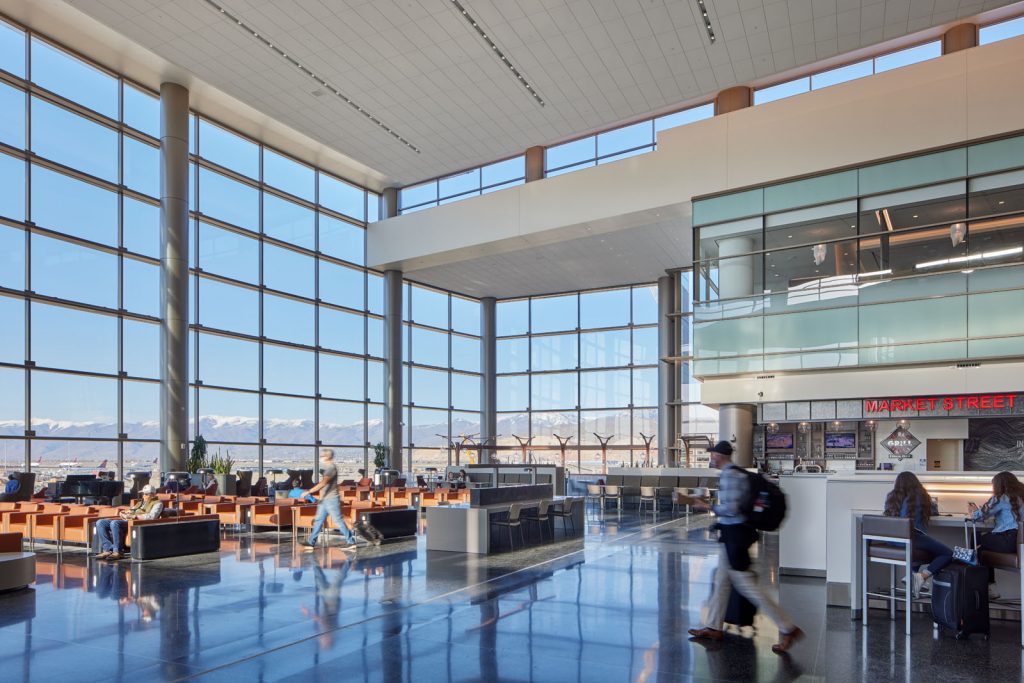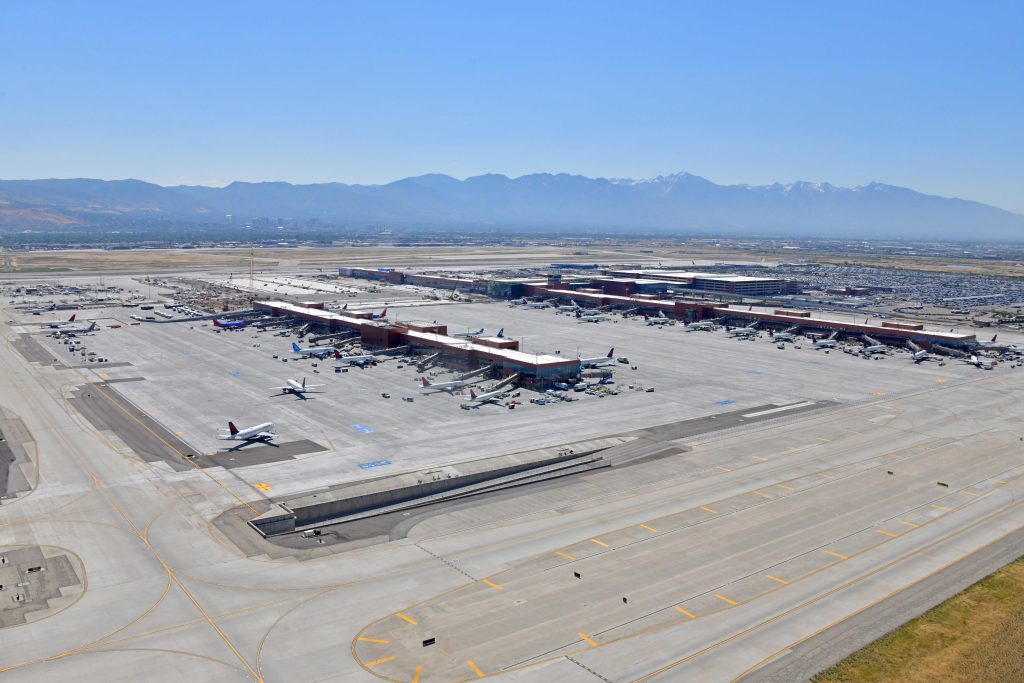Partnering with the Planet: Sustainability at SLC
Salt Lake City International Airport (SLC) embodies the values of Earth Day every day and is often looked to as a benchmark for environmentally responsible airports.
From waste reduction to the layout of the concourses, every aspect of The New SLC has been designed to minimize its environmental footprint. These numerous sustainable features resulted in The New SLC Airport’s design being awarded LEED Gold certification – an impressive achievement for facilities that cover more than 1.9 million square feet.
Reducing Emissions
Sustainable efforts include SLC’s work to reduce emissions and to provide passengers with sustainable travel options through both design and the use of alternative fuel sources.
For example, SLC’s linear concourse layout minimizes aircraft taxiing, reducing aircraft emissions by 15,000 metric tons annually – the equivalent of removing more than 3,200 cars from the road. Additionally, 75% of SLC’s fleet vehicle fuel consumption comes from alternative sources, and more than 90 electric vehicle charging stations are available for passenger and employee use across SLC’s parking facilities. The airport’s hub carrier, Delta Air Lines, is also invested in using alternative fuel sources and operates a nearly 100% electric ground support equipment fleet at SLC.
To minimize energy use for lighting and heating/cooling, high-bay windows maximize daylight, and a stepped roof system harvests southern light. As a result of these innovations and others, The New SLC utilizes 40% less electricity than the previous airport.
SLC also receives 7% of its electricity from renewable sources with plans to dramatically expand these resources in the future. In 2020, Salt Lake City joined several local municipalities in purchasing power from a new, local 80 MW solar project. When the project comes online in 2023, it will supply SLC with approximately 50% of its total electricity consumption.
Waste Not
SLC also actively works to reduce the amount of waste generated and diverts waste from landfills. In fact, 95% of construction waste associated with building The New SLC was diverted from landfills. Additionally, in 2020, the airport diverted 27% of its municipal solid waste through a robust recycling program. Fifty-six water bottle refilling stations to help minimize the consumption of single-use plastic bottles too.
Water Conservation
Located in a semi-arid climate, SLC was built with water conservation top of mind. The airport includes low-flow sinks and toilets, resulting in reduced water use by 20% compared to the previous airport. The airport has also reduced the use of water on landscaping by 50% due to smart meter management and by planting drought tolerant vegetation. A largely unknown aspect of SLC’s sustainability efforts include a 465-acre wetland mitigation site. By tracking water levels, monitoring and replacing plants and controlling invasive species, the property helps support native plant and animal life, creating a healthy ecosystem for the community.


Photo Credit: HOK 

